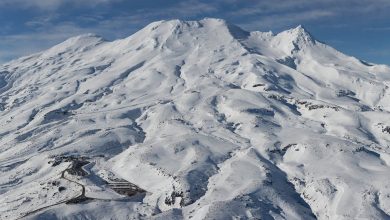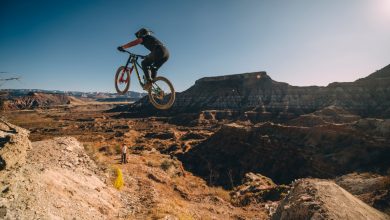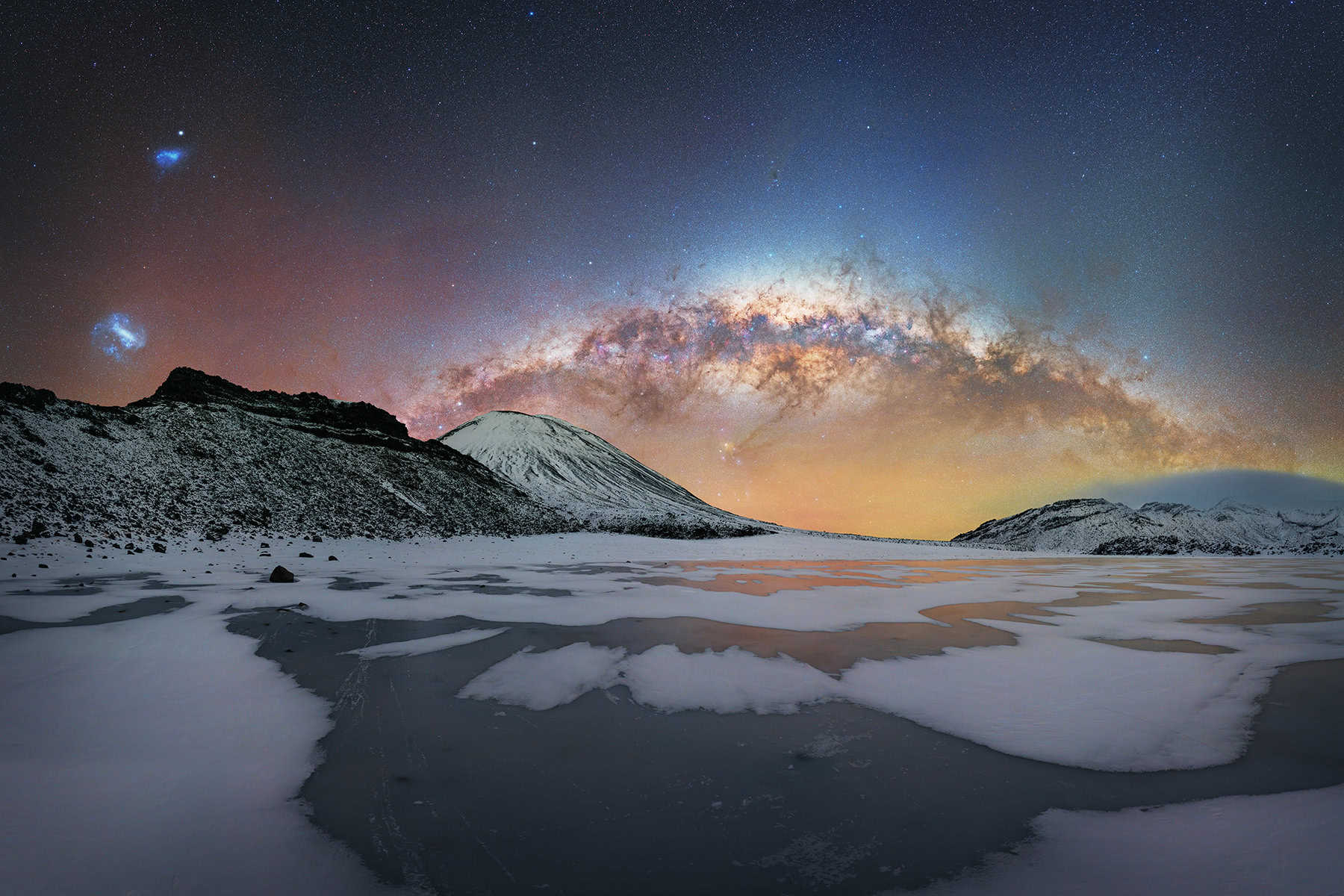
Hiking, tramping, rambling – no matter what the term, it normally means putting one foot in front of the other, sometimes with an overnight pack, sometimes just for the day, in the sun, in the rain, in the cold. Sometimes flat, sometimes in mud, sometimes in the snow and sometimes in the bush. The joy of the Tongariro crossing is that you often get most of all of that in one day!
The Tongariro Alpine Crossing isn’t just a tramp it’s a pilgrimage, through one of New Zealand’s most breathtaking landscapes. Widely regarded as one of the world’s best day hikes, this 19.4-kilometer trek weaves through volcanic craters, past emerald lakes, and over alpine passes. This is a must-do on your bucket list if visiting New Zealand and a rite of passage if you live here.
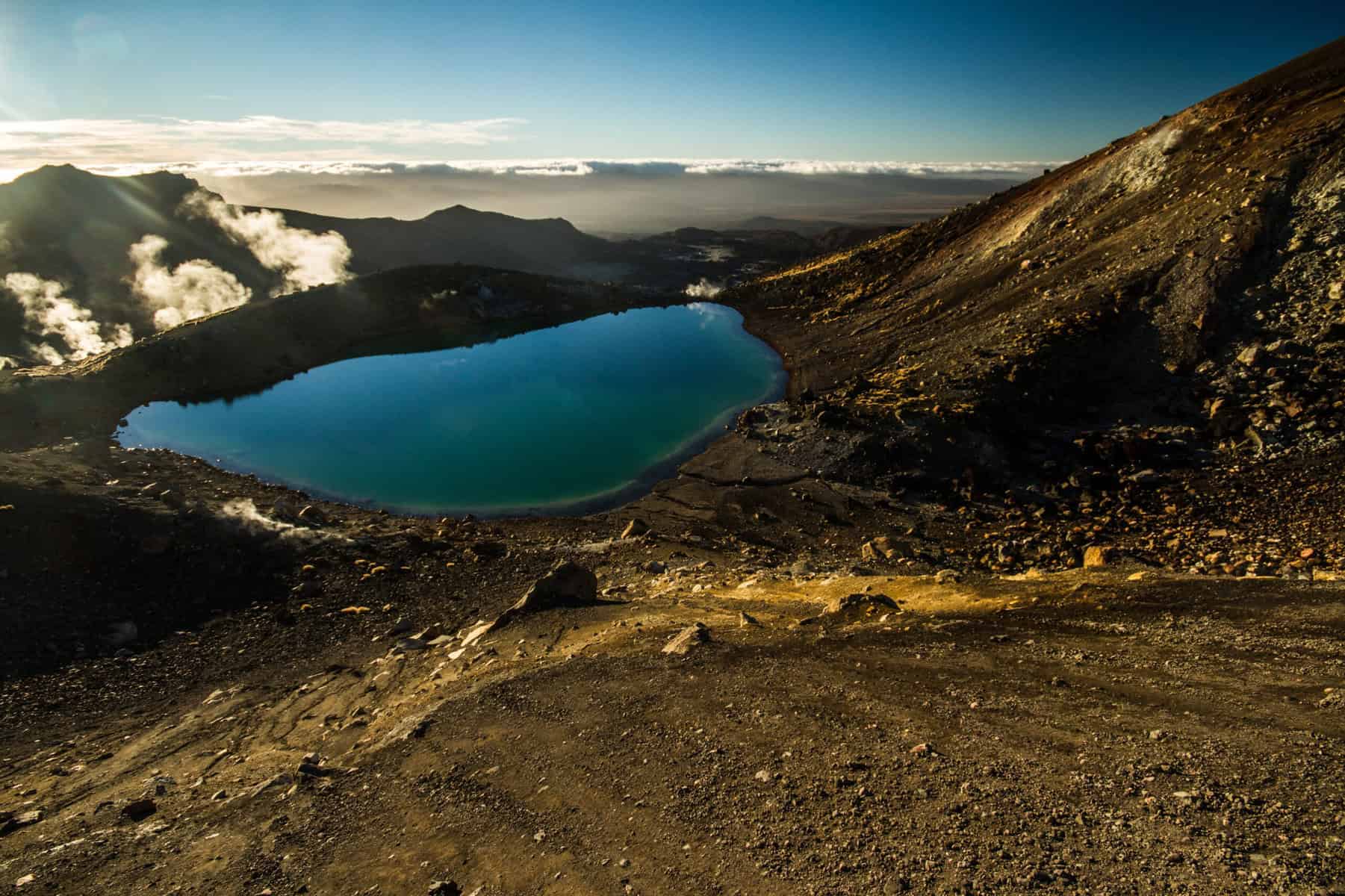
The Lay of the Land: What to Expect on the Crossing
From start to finish, the Tongariro Crossing is a visual feast. The trail begins at the Mangatepopo Valley, a wide, open space that introduces you to the rugged, volcanic terrain of the region. As you ascend, you’ll pass by the Soda Springs—a perfect spot for a quick break and a few photos. The real challenge begins with the Devil’s Staircase, a steep climb that tests your legs but rewards you with stunning views of Mount Ngauruhoe, also known as Mount Doom from The Lord of the Rings.
Once you conquer the Devil’s Staircase, you’ll reach the South Crater, a vast, almost surreal flatland that feels otherworldly. The trail then leads you to Red Crater, the highest point of the crossing at 1,886 meters. The views here are nothing short of epic, with the vibrant Red Crater and the iconic Emerald Lakes below. These lakes get their stunning colour from the minerals leaching out of the surrounding rock.
The descent takes you past Blue Lake, a sacred site to the local Māori people, so remember to show your respect and don’t swim here, in fact do not swim in any of the pools. The final stretch of the trail winds through tussock-covered slopes and native forest before reaching the Ketetahi car park.
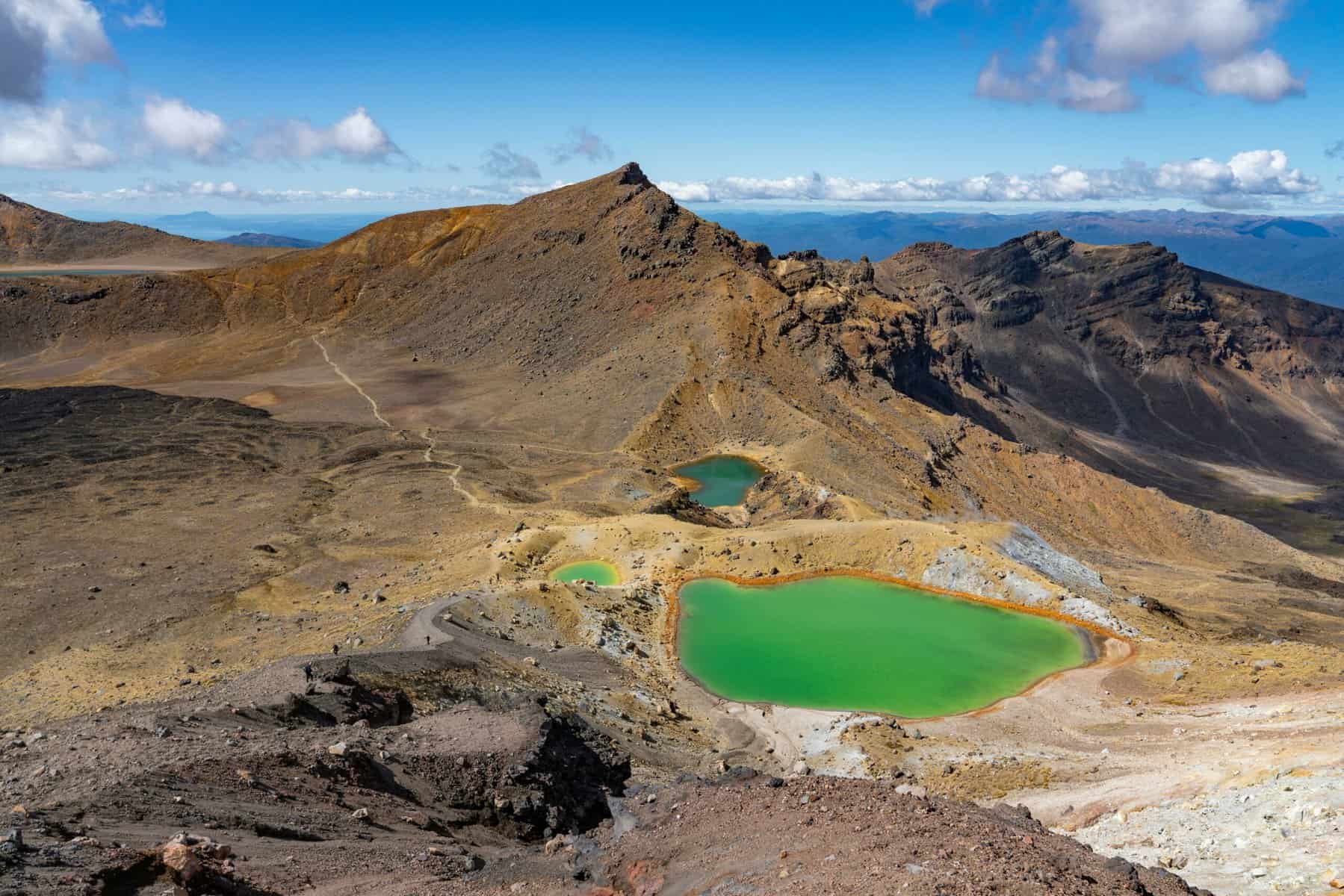
Why It’s One of the Best: The Stats and Facts
So, what makes the Tongariro Alpine Crossing rank among the best hikes in the world? For starters, it’s the sheer diversity of landscapes. In just one day, you traverse everything from alpine meadows to volcanic craters, all while being surrounded by dramatic, ever-changing scenery.
The crossing attracts around 120,000 hikers annually, and it’s not hard to see why. The trail is well-maintained, with clear markers and boardwalks in trickier sections. However, it’s not for the faint-hearted. With a total elevation gain of about 800 meters, it’s a challenging hike that requires a good level of fitness. The weather can change rapidly, with temperatures often dropping below freezing, even in summer. Considering the numbers doing the Crossing that can get up to 800 in winter and over 3000 per day in summer, the death toll is just under 60, but you still need to be prepared.
Seasons of Tongariro: What Each Time of Year Has to Offer
Timing your trek can make all the difference. Here’s a breakdown of what to expect in each season:
Summer (December to February): The most popular time to hike the Tongariro Crossing is during the summer months. The weather is more stable, and the longer daylight hours give you plenty of time to complete the hike at a leisurely pace. However, this also means more crowds. If you’re seeking solitude, consider starting the hike early in the morning or later in the afternoon.
Autumn (March to May): Autumn offers a quieter experience with fewer hikers on the trail. The temperatures are cooler, which can be more comfortable for some, and the autumnal colours add a unique beauty to the landscape. Be prepared for more unpredictable weather, though, with the possibility of early snow on the higher sections of the trail.
Winter (June to August): Winter transforms the Tongariro Crossing into a snow-covered wonderland. The trail becomes more challenging and requires additional equipment such as crampons and ice axes, along with experience in alpine conditions. However, the payoff is a stunning, almost ethereal landscape, with the chance to experience the crossing in near solitude. – Our suggestion in winter is get a guide!
Spring (September to November): Spring is a shoulder season, offering a mix of winter and summer conditions. The trail can be icy in places, and the weather is still quite variable. However, the wildflowers start to bloom, adding a splash of colour to the rugged terrain. It’s a great time for those looking to avoid the summer crowds while still enjoying relatively mild weather.

History and Cultural Significance
The Tongariro National Park, where the crossing is located, holds a special place in New Zealand’s history and culture. It’s the oldest national park in the country, established in 1887, and the fourth oldest in the world. The area is also recognized as a UNESCO World Heritage site, both for its natural beauty and its cultural significance to the Māori people.
The park’s mountains—Tongariro, Ngauruhoe, and Ruapehu—are considered sacred, with deep spiritual importance to the local iwi (tribes). According to Māori legend, these mountains are part of a dramatic love story involving the warrior mountains, Tongariro, Taranaki, and Ruapehu, and their love for the beautiful mountain Pihanga. This cultural heritage is woven into the landscape, making the hike not just a physical journey but a spiritual one as well.
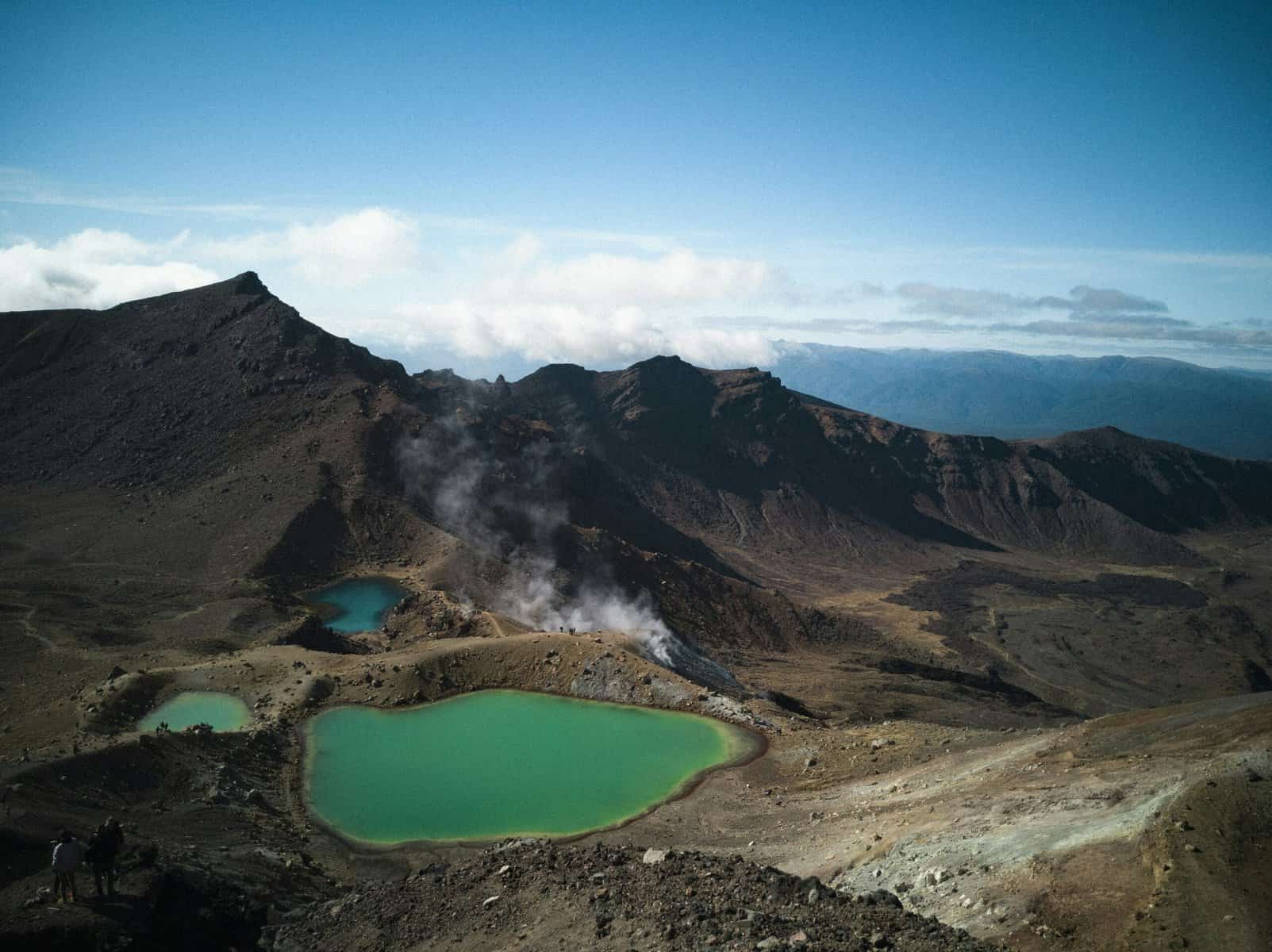
Important Considerations and Restrictions
While the Tongariro Crossing is accessible to many, there are a few key things to keep in mind:
Weather Conditions: Always check the weather forecast before setting out. Conditions can change rapidly, and what starts as a clear day can quickly turn into a whiteout. The Department of Conservation (DOC) provides up-to-date trail information and weather warnings, so make sure to do your research.
Guided Tours: For those less experienced in alpine environments, consider booking a guided tour, especially during the winter months. Guides provide essential safety gear and ensure you stay on the right path, particularly in poor visibility.

Environmental Respect: The crossing is part of a fragile ecosystem, so it’s crucial to practice Leave No Trace principles. Stick to marked trails, pack out all rubbish, and respect the natural and cultural heritage of the area.
Permit Requirements: No permits are required to hike the crossing itself, but if you plan to stay overnight in the national park or use certain facilities, you may need to obtain a backcountry hut pass or campsite permit.

The Tongariro Alpine Crossing isn’t just one of the best hikes in the world—it’s an unforgettable journey through New Zealand’s wild heart. Whether you’re drawn by the stunning landscapes, the challenge of the terrain, or the deep cultural history, this hike offers something for everyone. Just remember to prepare well, respect the environment, and take your time to soak in the beauty around you. It’s not just about reaching the end—it’s about savouring every step of the way.



